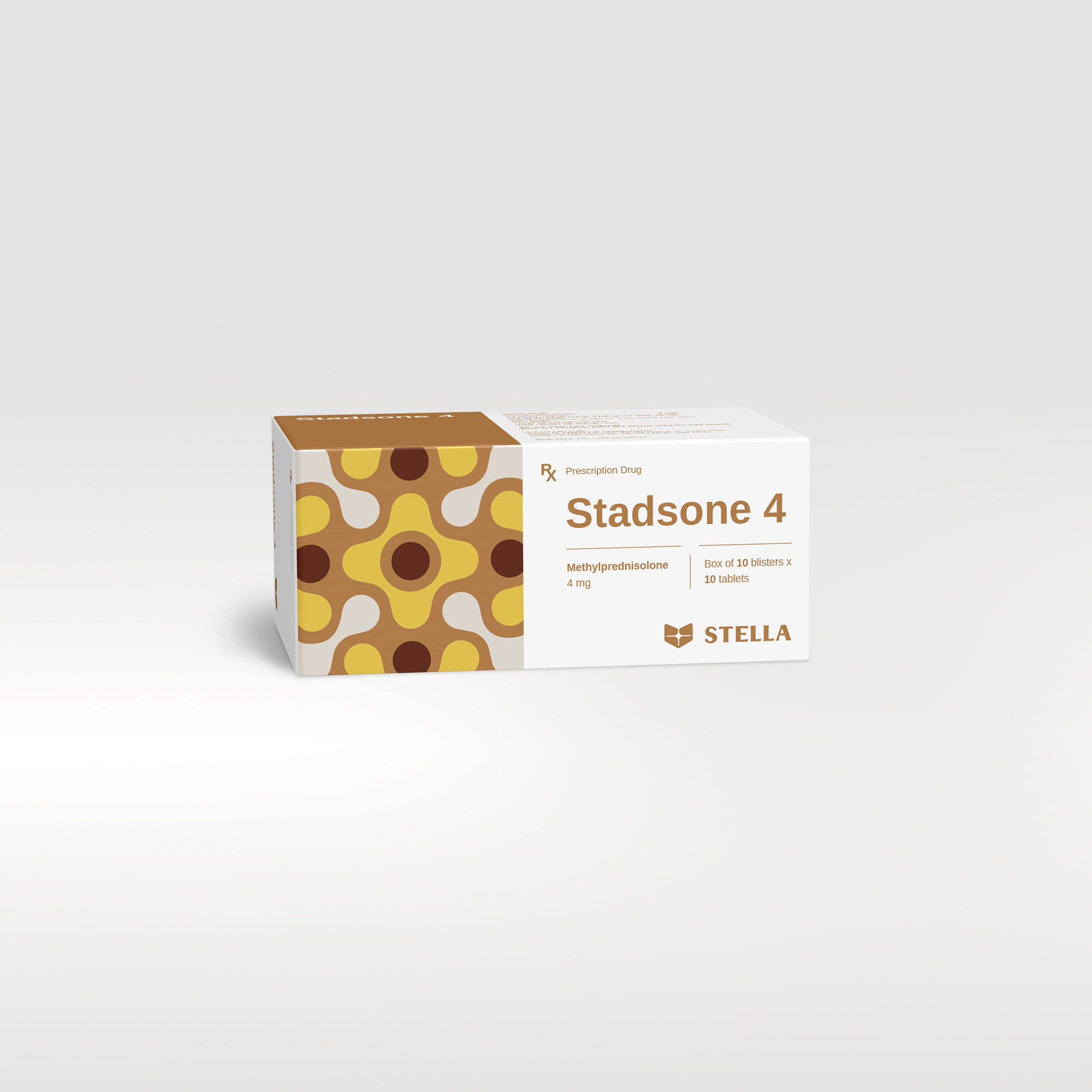Indications
Endocrine disorders
- Primary or secondary adrenocortical insufficiency
- Congenital adrenal hyperplasia.
- Nonsuppurative thyroiditis.
- Hypercalcaemia associated with cancer.
Non-endocrine disorders
Rheumatic disorders
As adjunctive therapy for short-term administration (to tide the patient over an acute episode or exacerbation) in:
- Psoriatic arthritis.
- Rheumatoid arthritis, including juvenile rheumatoid arthritis (selected cases may require low-dose maintenance therapy).
- Ankylosing spondylitis.
- Acute and subacute bursitis.
- Acute nonspecific tenosynovitis.
- Acute gouty arthritis.
- Post-traumatic osteoarthritis.
- Synovitis of osteoarthritis.
- Epicondylitis.
Collagen diseases
During an exacerbation or as maintenance therapy in selected cases of:
- Systemic lupus erythematosus.
- Systemic dermatomyositis (polymyositis).
- Acute rheumatic carditis.
- Polymyalgia rheumatica.
- Giant cell arteritis.
Dermatologic diseases
- Pemphigus.
- Bullous dermatitis herpetiformis.
- Severe erythema multiforme (Stevens-Johnson syndrome).
- Exfoliative dermatitis.
- Mycosis fungoides.
- Severe psoriasis.
- Severe seborrhoeic dermatitis.
Allergic states
Control of severe or incapacitating allergic conditions intractable to adequate trials of conventional treatment:
- Seasonal or perennial allergic rhinitis.
- Serum sickness.
- Bronchial asthma.
- Drug hypersensitivity reactions.
- Contact dermatitis.
- Atopic dermatitis.
Ophthalmic diseases
Severe acute and chronic allergic and inflammatory processes involving the eye and its adnexa such as:
- Allergic corneal marginal ulcers.
- Herpes zoster ophthalmicus.
- Anterior segment inflammation.
- Diffuse posterior uveitis and choroiditis.
- Sympathetic ophthalmia.
- Allergic conjunctivitis.
- Keratitis.
- Chorioretinitis.
- Optic neuritis.
- Iritis and iridocyclitis.
Respiratory diseases
- Symptomatic sarcoidosis.
- Loeffler’s syndrome not manageable by other means.
- Berylliosis.
- Fulminating or disseminated pulmonary tuberculosis when used concurrently with appropriate antituberculous chemotherapy.
- Aspiration pneumonitis.
Haematologic disorders
- Idiopathic thrombocytopenia purpura in adults.
- Secondary thrombocytopenia in adults.
- Acquired (autoimmune) haemolytic anaemia.
- Erythroblastopenia (RBC anaemia).
- Congenital (erythroid) hypoplastic anaemia.
Neoplastic diseases
For palliative management of:
- Leukemias and lymphomas in adults.
- Acute leukaemia of childhood.
Edematous states
- To induce a diuresis or remission of proteinuria in the nephrotic syndrome, without uraemia, of the idiopathic type or that due to lupus erythematosus.
Gastrointestinal diseases
To tide the patient over a critical period of the disease in:
- Ulcerative colitis.
- Regional enteritis.
Nervous system
- Acute exacerbations of multiple sclerosis.
- Management of oedema associated with brain tumour.
Organ transplantations
Miscellaneous
- Tuberculous meningitis with subarachnoid block or impending block when used concurrently with appropriate antituberculous chemotherapy.
- Trichinosis with neurologic or myocardial involvement.
Dosage
- The initial dosage of methylprednisolone tablets may vary depending on the specific disease entity being treated. In situations of less severity lower doses will generally suffice, while in selected patients, higher initial doses may be required. Clinical situations in which high dose therapy may be indicated include multiple sclerosis (200 mg/day), cerebral oedema (200 – 1,000 mg/day) and organ transplantation (up to 7 mg/kg/day). If, after a reasonable period of time, there is a lack of satisfactory clinical response, methylprednisolone should be discontinued and the patient transferred to other appropriate therapy. If after long-term therapy the drug is to be stopped, it is recommended that it be withdrawn gradually rather than abruptly.
- After a favourable response is noted, the proper maintenance dosage should be determined by decreasing the initial drug dosage in small decrements at appropriate time intervals until the lowest dosage which will maintain an adequate clinical response is reached. It should be kept in mind that constant monitoring is needed in regard to drug dosage. Included in the situations which may make dosage adjustments necessary are changes in clinical status secondary to remissions or exacerbations in the disease process, the patient’s individual drug responsiveness, and the effect of patient exposure to stressful situations not directly related to the disease entity under treatment; in this latter situation (stressful situations not directly related to the disease entity under treatment) it may be necessary to increase the dosage of methylprednisolone for a period of time consistent with the patient’s condition.
- It should be emphasized that dosage requirements are variable and must be individualized on the basis of the disease under treatment and the response of the patient.
- Alternate day therapy (ADT): Alternate day therapy is a corticosteroid dosing regimen in which twice the usual daily dose of corticosteroid is administered every other morning. The purpose of this mode of therapy is to provide a patient requiring long-term pharmacologic dose treatment with the beneficial effects of corticoids while minimising certain undesirable effects, including pituitary-adrenal suppression, the Cushingoid state, corticoid withdrawal symptoms and growth suppression in children.
- Elderly patients: Treatment of elderly patients, particularly if long-term, should be planned bearing in mind the more serious consequences of the common side-effects of corticosteroids in old age, particularly osteoporosis, diabetes, hypertension, susceptibility to infection and thinning of skin.
- Paediatric population: In general, dosage for children should be based upon clinical response and is at the discretion of the physician. Treatment should be limited to the minimum dosage for the shortest period of time. If possible, treatment should be administered as a single dose on alternate days.
Usage
Stadsone 4 is orally administered.




